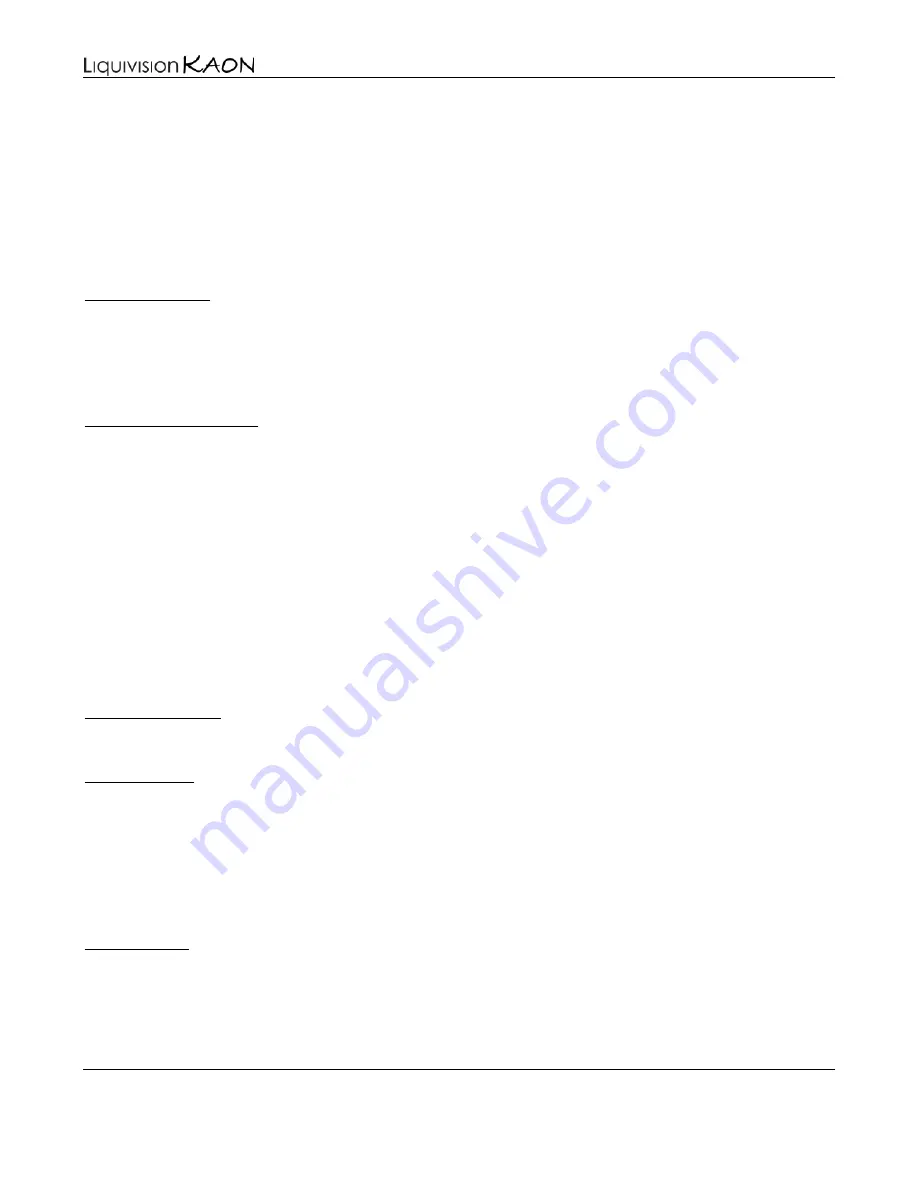
Dive Computer
User Manual
Liquivision Products, Inc
-
36
-
Revision 1.9 Software 1.17
●
CNS start – the central nervous system oxygen saturation, in percent, at the beginning of the
dive
●
CNS finish – the same value at the end of the dive
●
OTU – oxygen toxicity units acquired throughout the duration of this dive
●
Depth Graph – by choosing this option, you will see depth profile of your dive
●
Temp. Graph – by choosing this option, you will see temperature profile
The depth graph spans the whole width of the screen, with the start of the dive at the left-most part, and
the end of dive at the right-most part. The top of the screen represents the surface of the water, and the
bottom of the screen represents the maximum depth reached (this number is also printed on the screen).
By tapping, you exit back into the “Log Detail” menu.
5.3. Depth Graph
The temperature graph also spans the whole width of the screen, with the start of the dive at the left-
most part, and the end of dive at the right-most part. There are two numbers printed on the screen, one
in the bottom-left – that is temperature represented at the bottom of the graph, and one in the top-left –
that is temperature represented at the top of the graph.
5.4. Temperature Graph
Note that these values are not necessarily the maximum and minimum temperature values from the
dive. The temperature graph screen has a minimum temperature range of 5 degrees Celcius. If the
temperature range of the dive was greater than 5 degrees Celsius then the values shown at the top and
bottom are the max and min temperature values from the dive. If the temperature range is less than 5
degrees Celsius then the values at the top and bottom of the screen
are not
the max and min values
from the dive, but are there for scale, to define the top and bottom of the graph. By tapping, you exit
back to the “Log Detail” menu.
This is a series of settings you can use to personalize your KAON’s display.
6. Display Settings
The “Brightness” setting has three levels – low, medium and high. The darker the water, the lower
brightness you need to see your display clearly. Also, you might find high brightness in the dark water
too bright – that is, it could emit too much light, compared to environment you're diving in. On the
other hand, in clear, shallow water, with lots of sunlight, you will need high brightness to see the
display properly. Keep in mind that higher brightness burns more battery, so you should select the
lowest brightness that meets your needs on a given dive.
6.1. Brightness
You can use the “Auto Dim” feature to fine-tune the brightness of your display. If you need high
brightness on the surface and lower brightness at depth, you do not need to adjust it manually. Instead,
you can set your “Auto Dim” setting to the depth at which you want your display brightness to be
reduced to Low. By using the “Auto Dim” feature, here is what will happen:
6.2. Auto Dim






























